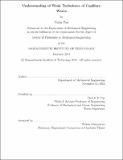| dc.contributor.advisor | Dick K.P. Yue. | en_US |
| dc.contributor.author | Pan, Yulin, Ph. D. Massachusetts Institute of Technology | en_US |
| dc.contributor.other | Massachusetts Institute of Technology. Department of Mechanical Engineering. | en_US |
| dc.date.accessioned | 2017-05-11T19:06:12Z | |
| dc.date.available | 2017-05-11T19:06:12Z | |
| dc.date.copyright | 2017 | en_US |
| dc.date.issued | 2017 | en_US |
| dc.identifier.uri | http://hdl.handle.net/1721.1/108837 | |
| dc.description | Thesis: Ph. D., Massachusetts Institute of Technology, Department of Mechanical Engineering, 2017. | en_US |
| dc.description | This electronic version was submitted by the student author. The certified thesis is available in the Institute Archives and Special Collections. | en_US |
| dc.description | Cataloged from student-submitted PDF version of thesis. | en_US |
| dc.description | Includes bibliographical references (pages 217-225). | en_US |
| dc.description.abstract | First developed by Zakharov, Weak Turbulence Theory (WTT) aims at describing the steady-state statistical property of an ensemble of waves in weakly nonlinear interactions. In the wavenumber k domain, the WTT steady-state analytical solution yields a power-law inertial-range spectrum I - ka, with a constant energy flux P from large forcing scales to small dissipative scales. Over the years, this result has found applications in various physical contexts including plasma physics, optics, internal waves, surface gravity and capillary waves. As a representative physical system with three-wave resonant interactions, capillary wave turbulence has been the subject of many investigations. In addition to the fundamental interest of this problem, an accurate representation of capillary waves on water surface is also important in understanding the air-sea interaction and remote sensing of the ocean. We study capillary wave turbulence from both theoretical and computational considerations. The original theoretical derivation, from the primitive Euler equations to the Kinetic Equation (KE) which yields the final power-law solution I ~ CPI/2k-19/4, is re-formulated. While an emphasis is placed on understanding the assumptions in wave turbulence, we correct the analytical evaluation of the Kolmogorov Constant, with C = 6.97, different compared to the original derivation. We then develop a tool, based on the High Order Spectral (HOS) method, to simulate the primitive Euler equations on a Cartesian grid. The simulation confirms the theoretical results, which can be approached at sufficiently high nonlinearity level, and uncovers the physics at insufficient nonlinearity, namely with the steepened power-law spectral slope and reduced capability of energy flux. These phenomena, earlier observed experimentally in finite wave basin, are shown to be caused by the finite-box effect, i.e., nonlinear resonance broadening becomes insufficient to overcome the discreteness in k. The mechanism of finite-box effect is further elucidated in the framework of the KE. In order to incorporate the quasi-resonant interaction on a discrete grid, we develop the quasi-resonant kinetic equation (QRKE) with the introduction of an additional parameter r, which governs the ratio of nonlinear resonance broadening and wavenumber discreteness. We show that the physics at sufficient and insufficient nonlinearity, as obtained in the simulation of primitive Euler equations, are recovered in the results of , K=K0 and K < K0, where so represents an upper limit of energy flux by quasi-resonance approaching that of exact resonance in theoretically infinite domain. This thus establishes the physical connection between nonlinearity level and the features of the power-law spectrum, through the nonlinear broadening. We finally apply the developed tool of primitive Euler equations to study the freely-decaying capillary wave turbulence. The problem considered here is an extension of WTT, where the turbulence is allowed to evolve freely in the presence of physically realistic broad-scale dissipation and finite-box effect. Based on our numerical findings, we obtain a simple mathematical model, describing the evolution of the power-law spectrum in the form of exponential modal decay from an initial power-law spectrum. The evolving dynamics involved in this process is elucidated. The investigations in this thesis are for the special case of capillary wave turbulence, while our main findings are expected to also hold for weak turbulence in other similar physical systems. | en_US |
| dc.description.statementofresponsibility | by Yulin Pan. | en_US |
| dc.format.extent | 225 pages | en_US |
| dc.language.iso | eng | en_US |
| dc.publisher | Massachusetts Institute of Technology | en_US |
| dc.rights | MIT theses are protected by copyright. They may be viewed, downloaded, or printed from this source but further reproduction or distribution in any format is prohibited without written permission. | en_US |
| dc.rights.uri | http://dspace.mit.edu/handle/1721.1/7582 | en_US |
| dc.subject | Mechanical Engineering. | en_US |
| dc.title | Understanding of weak turbulence of capillary waves | en_US |
| dc.type | Thesis | en_US |
| dc.description.degree | Ph. D. | en_US |
| dc.contributor.department | Massachusetts Institute of Technology. Department of Mechanical Engineering | |
| dc.identifier.oclc | 986242631 | en_US |
